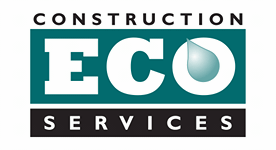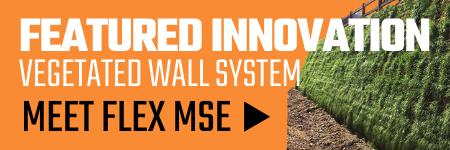Integrated Stormwater Harvesting with Low Impact Development
Even though rainwater harvesting has been practiced for thousands of years, it is only now beginning to inspire the formation of an organized industry.
What are the benefits of rainwater harvesting?
For starters, harvesting rainwater helps control stormwater runoff, thus minimizing the impact on local stormwater infrastructure and reducing the threat of flooding. It also puts water to good use. Stored rainwater can be used for both outdoor and indoor uses including landscape irrigation, watering plants or gardens, toilet flushing, laundry, washing cars or even bathing or drinking.
Another great benefit of rainwater harvesting is it decentralizes the water supply. That means instead of being completely dependent on municipal sources or private wells, consumers who choose to harvest rainwater have more control on how their water is sourced, treated and put to use.
How to harvest rainwater?
Consider first, the purpose(s) you want to use the rainwater. The way you plan to use the rainwater will determine how much you will need to collect. The typical catchment area is the roof of a house or a building. As a rule of thumb, 1,000 square feet of roof can collect about 600 gallons per one-inch of rain. But why not consider collecting all or most of the rainfall that falls on the entire acreage? Increasing the footprint of your catchment area will provide a quicker Return on Investment (ROI).
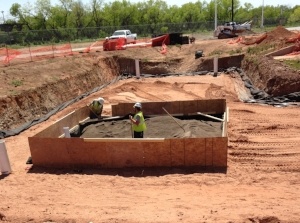 The most cost-effective method to harvest stormwater from the entire landscape is by using a High Performance Modular Biofiltration System (HPBMS). For example, the Wichita Falls Airport evaluated two options for their 200,000 gallon harvesting system. The first option used 1.14 acres of rooftop and the second option used the entire 34 acres of the site. The first option generated about 800,000 gallons of water, which would take about 100 years to break even. The second option generated about 2.7 million gallons of water and would only take 10 years to break even. In order to capture the entire site runoff, engineers designed a 400 SF HPBMS located in the dry detention pond.
The most cost-effective method to harvest stormwater from the entire landscape is by using a High Performance Modular Biofiltration System (HPBMS). For example, the Wichita Falls Airport evaluated two options for their 200,000 gallon harvesting system. The first option used 1.14 acres of rooftop and the second option used the entire 34 acres of the site. The first option generated about 800,000 gallons of water, which would take about 100 years to break even. The second option generated about 2.7 million gallons of water and would only take 10 years to break even. In order to capture the entire site runoff, engineers designed a 400 SF HPBMS located in the dry detention pond.
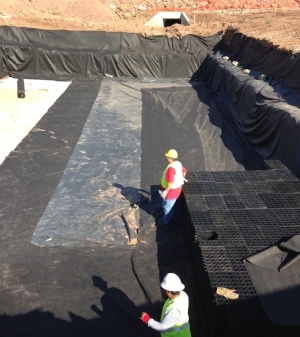 Below the biofiltration system was a modular open cell harvesting tank. As the detention pond filled up during a rain event, the water was able to flow through the biofiltration system at 100 in/hr into the harvesting system below.
Below the biofiltration system was a modular open cell harvesting tank. As the detention pond filled up during a rain event, the water was able to flow through the biofiltration system at 100 in/hr into the harvesting system below.
There are other methods for harvesting water such as permeable articulating concrete blocks and intelligent cloud-based software. Rather than have the water that infiltrates through the permeable pavement and flow into the storm system, the water can be stored and used for irrigation. Cloud-based software combined with an automated gate valve can turn a detention pond into a harvesting system. The software holds back the storage volume in the pond for harvesting when it’s not raining, but releases the water prior to a storm even to ensure the entire detention volume is available. The entire system is automated by a cloud based platform, but allows the user to control the system from the comfort of their desk.
We developed a harvesting system tool to maximize the ROI by using past rainfall data to project the cost savings. This tool can be used to determine the size of the cistern based off of the catchment area and water usage.
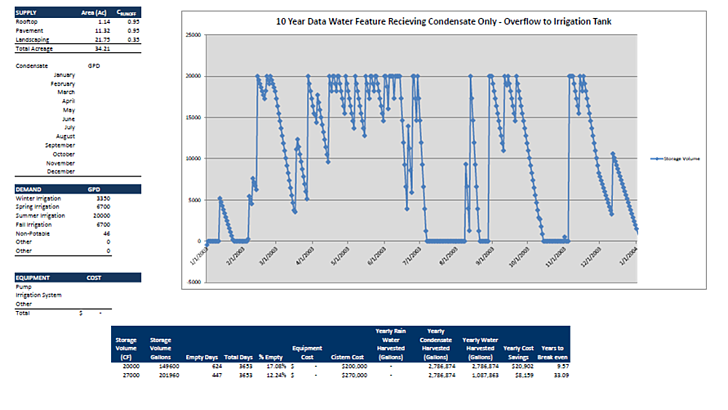 Contact us to find the most economical solution to your rainwater harvesting needs or stormwater management challenges.
Contact us to find the most economical solution to your rainwater harvesting needs or stormwater management challenges.
